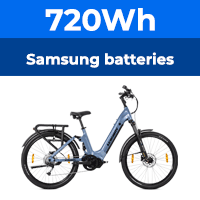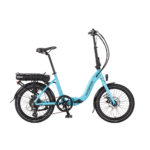Thanks Flecc, I thought this must be the case as I could not see how it would work the way it does otherwise. I have calculated that with a 28" wheel, in gear 7 of the 7 speed Agattu, the wheels are rotating at about 114 rpm at 15 kmh, which means that the motor sprocket must be rotating at about 172 rpm with a 21T/9T combination. Above this 172 rpm then the assist factor starts to be reduced according to your formula
1 - ( [kph - 15] / 9 ) = assist factor
In my case then the cutoff point for the assist level is boosted by 12/9 by the 12T sprocket and 21/18 by my 18T hub sprocket, resulting in a maximum speed of about 23 kmh before the assist level starts to be reduced.
The 12T sprocket allows me to pedal with 33% higher cadence before the assist level starts to drop, which for me is the main benefit.
There is a downside of course - As the unit operates in the way you describe, this means that the assistance must be reduced from 1:1 in normal mode to 1:0.75. In higher mode it must be reduced from 1:1.3 to 1:0.975.
Perhaps I will upgrade to a 2011 Kalkhoff next year with 1:2 assistance!
1 - ( [kph - 15] / 9 ) = assist factor
In my case then the cutoff point for the assist level is boosted by 12/9 by the 12T sprocket and 21/18 by my 18T hub sprocket, resulting in a maximum speed of about 23 kmh before the assist level starts to be reduced.
The 12T sprocket allows me to pedal with 33% higher cadence before the assist level starts to drop, which for me is the main benefit.
There is a downside of course - As the unit operates in the way you describe, this means that the assistance must be reduced from 1:1 in normal mode to 1:0.75. In higher mode it must be reduced from 1:1.3 to 1:0.975.
Perhaps I will upgrade to a 2011 Kalkhoff next year with 1:2 assistance!







